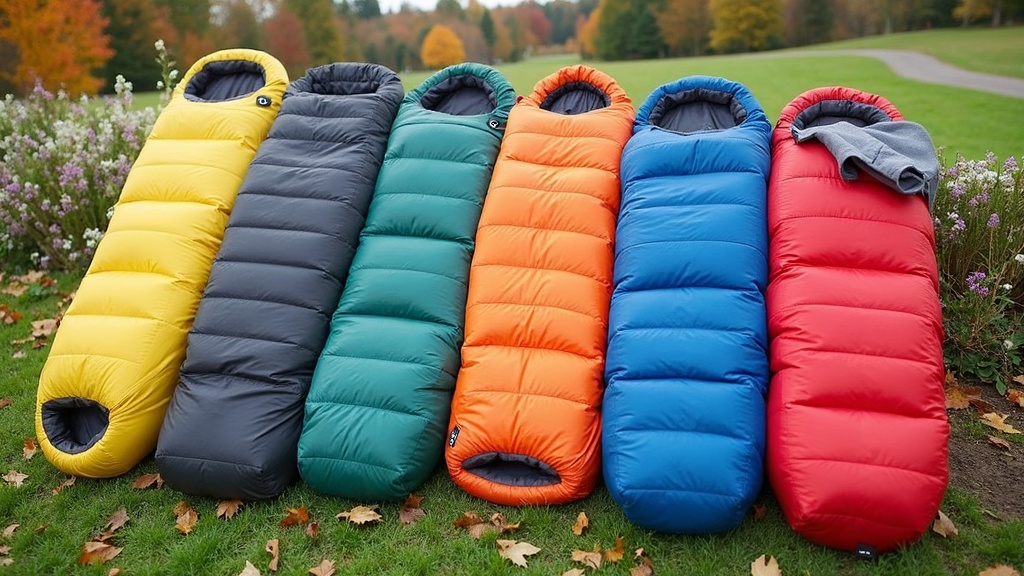If you’re the kind of person who loves to get outdoors, finding a sleeping bag that works for every season can really help you enjoy camping, hiking, or road trips with less hassle. I’ve faced many chilly nights and surprise summer heatwaves, so I know picking the right sleeping bag matters. In this article, I’ll explain the main things you need to know if you want a sleeping bag that adapts to all kinds of weather, giving you better comfort and making your outdoor experiences a lot easier.

Understanding Sleeping Bag Basics for All Seasons
Sleeping bags haven’t changed a lot in principle over the years, but there’s more choice than ever before. A sleeping bag’s job is simple: keep you warm enough for a good night’s sleep while blocking out the elements. But staying comfortable means something different in summer compared to winter… Where the main concern becomes keeping mosquitos and any other critters off of you!
The global camping gear market continues to grow, showing that more people are seeking equipment that easily shifts from summer to winter. Owning one sleeping bag that works year-round saves space at home and comes in handy when unpredictable weather strikes on your next adventure.
Sleeping bags first took shape as basic wool blankets back in the 19th century, but materials have come a long way since then. Today, lightweight synthetics and advanced insulation fill make it possible to create bags that work well for a range of temperatures. Many modern bags now offer unique blends of down and synthetic to get the best of both worlds: warmth, packability, and improved water resistance. This means your bag can perform in damp conditions, granting peace of mind during unpredictable springs or sudden autumn storms.
How Sleeping Bags Are Rated for Seasonal Use
Sleeping bag ratings can be confusing when you first start browsing. Most sleeping bags are rated by temperature, which is a hint to how cold it can get before you might feel uncomfortable. Common ratings include summer (above 35°F / 2°C), three season (20–35°F / –6 to 2°C), and winter (below 20°F / –6°C).
When choosing a sleeping bag for all seasons, you may want to look for three season options, as they’re designed to bridge the gap between warm and cold conditions.
Quick Tips for Picking an All-Season Sleeping Bag
There’s a bit more to think about when you want one sleeping bag that works everywhere—from cool spring nights to brisk autumn mornings and the occasional mild winter trip. These areas are really important in making a smart pick:
- Weather Protection: Some bags are water resistant or even have waterproof shells, which help on damp ground or if you’re in a tent with condensation problems.
- Shell Fabric: The outer material, often treated to resist water and block wind.
- Maintenance: Synthetic bags are easier to wash and dry than down bags, but modern hydrophobic down handles occasional dampness a lot better now too.
- Insulation: Material such as down is lighter and packs smaller, while synthetic performs better if it gets wet. Bags with full length zippers, foot vents, or two-way zipper systems helps you cool down if you’re too warm or seal in heat when you’re too cold. There are even sleeping bag systems that let you attach or detach insulation depending on the season. If you camp in places with wide temperature swings, a bag that lets you add inner liners or combine with an extra blanket are super useful.
- Weight: Lighter is better for hiking, bulky bags take up space, consider how you’ll be carrying it. If you’re backpacking, weight and space matter more, so down or lightweight synthetic fill helps a lot.
- Think About Extra Features: Things like draft collars, hoods, and stash pockets are easy to overlook but can make a difference if the temperature drops suddenly.
You May Want to Use a Sleeping Bag Liner: This acts as an extra layer in cold weather and lets you use the bag alone for summer trips. Liners are easy to wash and help your bag stay clean, plus they can add around 5–15°F to your sleeping arrangement. Liners expand your bag’s use, regular airing and proper storage help it work better and last years longer. The little things add up, especially if you’re outdoors a lot or want your gear to stick around for many more trips.
Keep It Dry: If you’re tent camping, try to air out your sleeping bag in the morning to stop any moisture buildup that can ruin insulation. A simple hang in the sun can keep your bag fresh and lofted, which helps it maintain warmth.
You May Also Want These Items
- Sleeping Pad: Adds insulation from cold ground and makes uneven campsites more rest worthy. There are inflatable, foam, and hybrid pads, each offering a different balance of weight, warmth, and cushioning.
- Compression Sack: Packs your bag smaller, which is really important for backpacking trips or when space is tight.
- Pillow: A small pillow can make you feel at home, even under the stars.
- Couples Sleeping Bag: If you travel with a friend or partner, consider getting a double sized sleeping bag. There are some really nice options on the market.
Wrapping Up
With a little planning, even unpredictable weather won’t ruin your trip. You’ll spend less time stressing about gear and more time having fun outside.
Great sleeping bag equals great night’s sleep to thoroughly enjoy your adventures!
